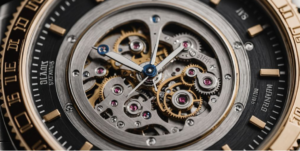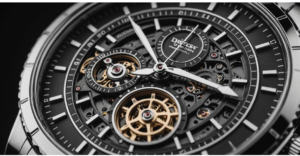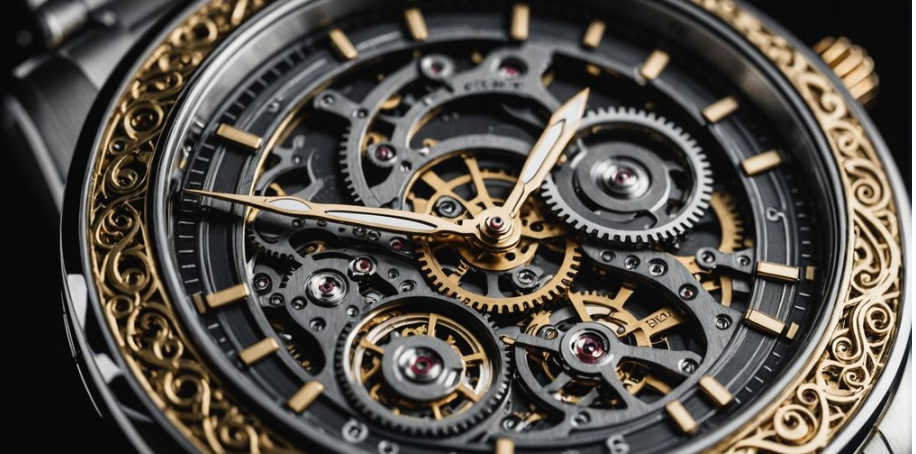When considering luxury watches, it’s crucial to be aware of the models you’re interested in. For instance, if you’re looking at popular models like the Seiko Submariner, understanding its distinct features can help you identify a fake. The Seiko Submariner, known for its craftsmanship and precision, has specific details that counterfeiters often overlook. Buying a luxury watch is an exciting experience, but it’s important to make sure your new timepiece is genuine. With so many convincing fakes out there, it can be tough to tell the difference. Here are seven tips to help you spot a fake watch and ensure you’re getting the real deal.
1. Look for Obvious Mistakes or Defects
When checking if a watch is genuine, start by looking for any obvious mistakes or defects. High-quality watches are made with strict standards, so things like peeling paint, scratches, or misspelled words are big red flags. Make sure the clasp works well and that the watch keeps time accurately.
- For example, some fake Michael Kors watches might leave out the “S”.
- Many low-quality Rolex fakes have badly centered crown stamps.
Pay close attention to every part of the watch. Even small details can tell you if it’s real or fake. Look at the index, strap, hands, buckle, and case. If any part looks rough, has a different color, or seems off in proportion, it might be a fake. Sometimes, genuine watches have parts replaced with fake ones, so check each element carefully.
2. Check the Watch for Crisp, High-Quality Lettering
When examining a watch, pay close attention to the lettering quality. Genuine designer watches are crafted by master watchmakers who use precise engraving tools to create clear, legible text. If any of the lettering appears muddled or hard to read, it’s likely a fake.
- This rule applies to all lettering, including serial numbers.
- For instance, if the edges around the “R” in “Rolex” look curvy and uneven, you’re probably handling a fake watch.
Always ensure the lettering is sharp and easy to read. This is a key indicator of authenticity.
3. Look for the Serial Number

When checking if a watch is genuine, look for an official serial number. Designer watches usually have an alphanumeric number printed somewhere on the watch. This number should match the one on the case and/or warranty.
- Ensure the serial number is laser-etched clearly, not printed sloppily.
- For example, an Omega watch has a serial number along the bottom face. This number should match the serial number on your warranty.
A clear and matching serial number is a strong indicator of a genuine watch. Always verify this detail to avoid counterfeits.
4. Check for the Box and Papers
When buying a watch, always check if it comes with its original box and papers. These items can provide extra reassurance about the watch’s authenticity. The box should be sturdy and well-made, while the papers should be of high quality with no spelling mistakes.
However, not all second-hand watches will have their original box and papers, especially older models. This doesn’t necessarily mean the watch is fake. A reputable dealer can still verify the watch’s authenticity without these items.
Even if a watch lacks its original box and papers, a good dealer can still authenticate it. The box and papers are just an added layer of reassurance.
Here are some key points to consider:
- Original Box: Should be sturdy and well-made.
- Papers: High-quality with no spelling errors.
- Older Models: May not have original box and papers but can still be genuine.
- Reputable Dealer: Can authenticate the watch even without box and papers.
5. Observe the Movement of the Watch
When checking if a watch is genuine, observe the movement closely. This is a key step in spotting a fake.
Check the Hands
Look at how the hands move. In a real luxury watch, the hands will have smooth micromovements, usually 5 to 7 per second. If the hands move in a single tick per second, it might be a quartz mechanism, which is common in fakes.
Test the Functionality
When examining a watch like the Seiko X, it’s important to pay close attention to the crown. The Seiko X is known for its smooth and precise crown movement, which is a hallmark of its quality. Try setting the time. A genuine watch will have a precise and smooth crown. On a fake, the crown might feel loose or imprecise. Also, check if all features work. For example, in some fake chronographs, the minute hand might just be decorative.
Inspect the Date Magnification
If the watch has a date window, it should have a magnifying glass above it. In genuine models, this glass magnifies the date by 2.5 times. In fakes, it might only magnify 1.5 times.
Always compare the watch with a real model or high-quality photos to spot any differences.
Look for Re-lumed Markers
The luminous material on the hands and markers should match the original style. If they look sloppy or don’t glow, they might have been re-lumed.
Check for Overpolishing
Signs of overpolishing include rounded or worn lugs and smoothed-out engraved logos. Quality refinishing should keep the edges crisp.
Replacement Parts
Make sure all parts, like crowns or crystals, match the watch model. Genuine parts will have proper logos and markings. Aftermarket parts can indicate damage history.
Engraved Case Backs
Look for signs that the case back has been opened, like marred screws or threading. This could mean the movement has been replaced or repaired.
6. Examine All Typefaces
When checking if a watch is genuine, pay close attention to the typefaces used on the watch. The fonts on a real watch are usually very precise and clean. If you see any uneven or blurry letters, it might be a fake.

Check the Date
Look at the numbers on the date. On a real watch, the numbers are usually well-formed and clear. For example, the lines on the number 4 should be different thicknesses. If the lines are the same thickness, it could be a sign of a fake.
Compare the Brand Name
The brand name on the watch should be bold and clear. For instance, on a real Rolex, the word “Rolex” is bolder than “Oyster Perpetual.” If the letters are all the same thickness, it might be a fake.
Look at the Numbers
The numbers on the watch face should be well-rounded and even. For example, the number 6 should be more rounded on a real watch. If the numbers look off, the watch might not be genuine.
Always take your time to examine the typefaces on the watch. This small detail can help you spot a fake easily.
7. Look at the Finishes of the Different Elements
When examining a watch, pay close attention to the finishes of its various parts. High-end brands like Rolex, Audemars Piguet, and Omega are known for their meticulous craftsmanship. They would never release a watch with visible defects, as it would harm their reputation.
To spot a fake, look at these elements:
- Index and Hands: Check for rough cut-outs or uneven finishes. Genuine watches have smooth, precise edges.
- Strap and Buckle: Feel for any inconsistencies. A real watch will be smooth with no rough areas.
- Case and Bezel: Observe the proportions and finishes. On a counterfeit, the bezel might be completely round, while the real one has more subtle finishing.
Even if the watch is genuine, some parts might have been replaced with fake ones. Always inspect each element separately.
By carefully examining these details, you can better determine if a watch is authentic or not.
When choosing a watch, it’s important to pay attention to the finishes of different elements. The quality of the materials and the craftsmanship can make a big difference in the look and feel of your timepiece.
Conclusion
Ensuring your watch is genuine can be a bit tricky, but it’s definitely worth the effort. By following these tips, you can avoid getting scammed and make sure you’re investing in a real timepiece. Always pay attention to the small details, like the quality of the materials, the accuracy of the engravings, and the presence of a serial number. Don’t forget to check the paperwork and, if possible, buy from a trusted dealer. Remember, if something feels off, it’s better to walk away and do more research. With a little bit of caution and knowledge, you can confidently enjoy your genuine watch.
Frequently Asked Questions
Why should I examine a watch for obvious mistakes or defects?
High-end watches are made with strict quality controls, so errors like peeling paint or misspelled words are rare. Catching these mistakes can help you identify a fake.
How can I tell if the lettering on a watch is genuine?
Authentic watches have clear, high-quality lettering. If the letters look blurry or uneven, the watch is likely a fake.
What should I know about serial numbers on watches?
Every luxury watch has a unique serial number. You can look up this number online to see if it matches the brand’s records. If the number is missing or duplicated, the watch may be fake.
Do I need the original box and papers to prove a watch is genuine?
While having the original box and papers can help verify authenticity, not all genuine watches come with them, especially older models. A reputable dealer can still confirm the watch’s authenticity without them.
Why is the movement of the watch important?
The movement, or the way the watch hands move, can reveal a lot about its authenticity. Genuine mechanical watches have smooth, precise movements, while fakes often have jerky or erratic movements.
What should I look for in the typefaces and finishes of a watch?
Check for consistent, high-quality typefaces and finishes. Any irregularities, like uneven fonts or rough edges, can be signs of a counterfeit watch.


